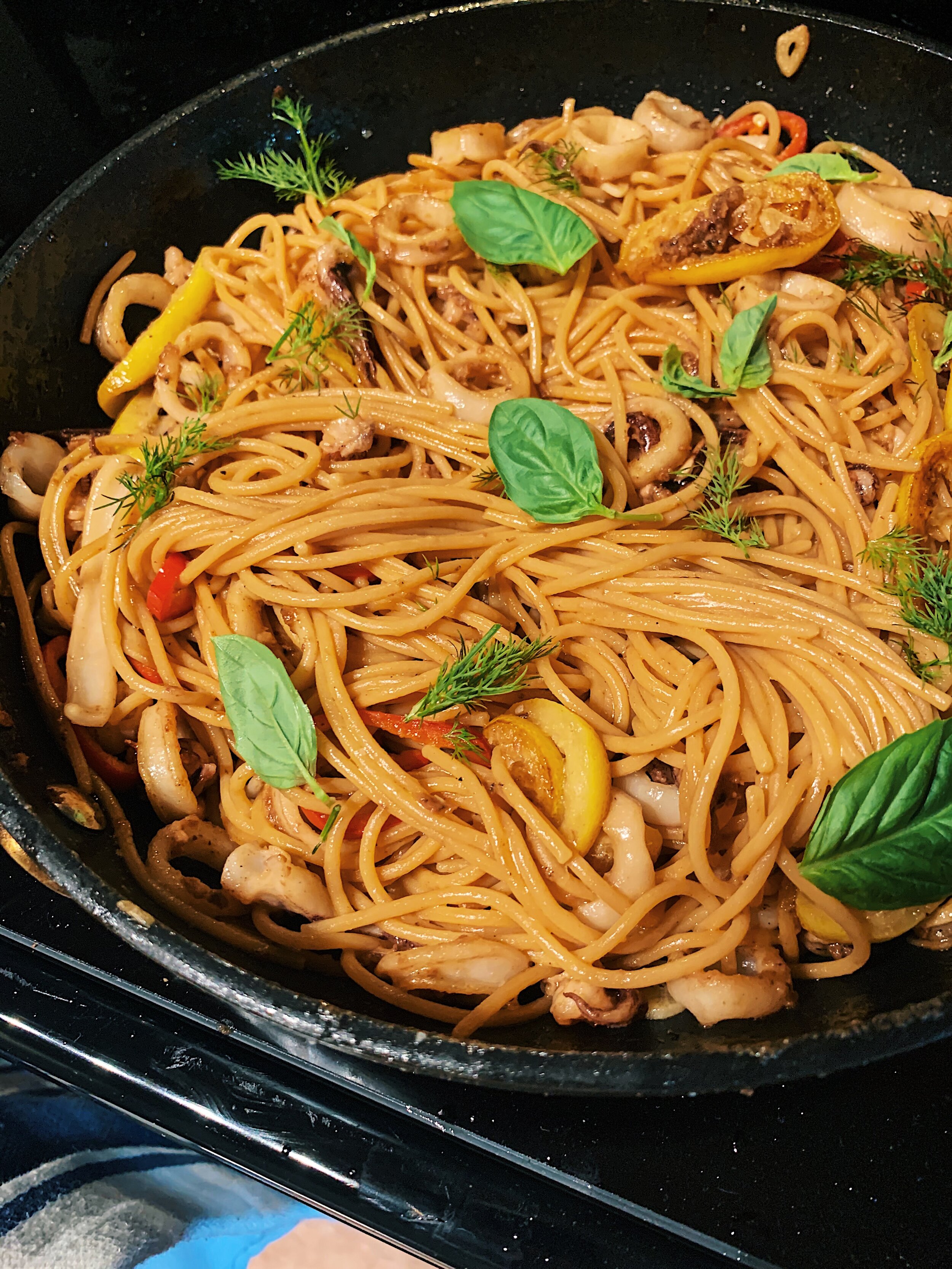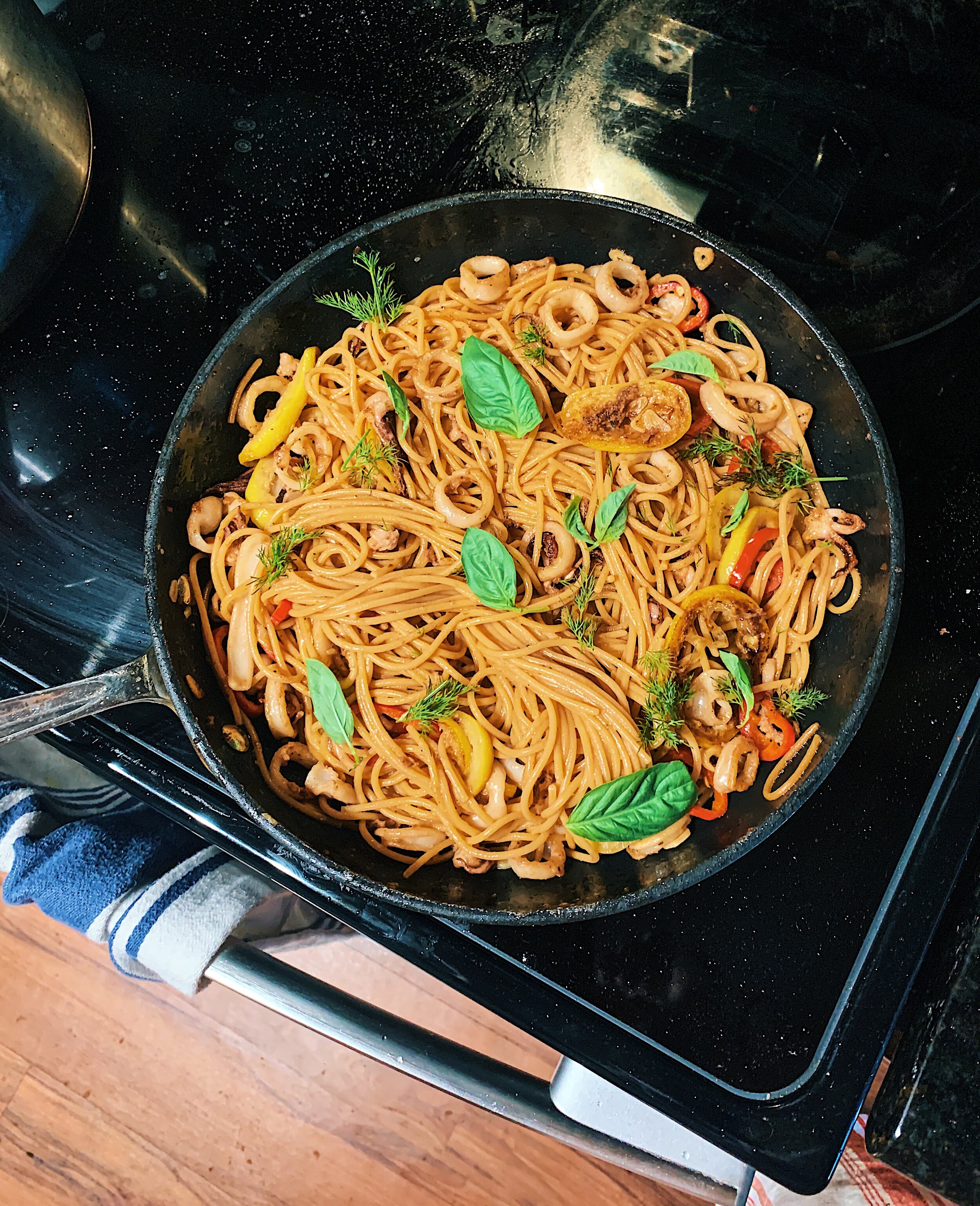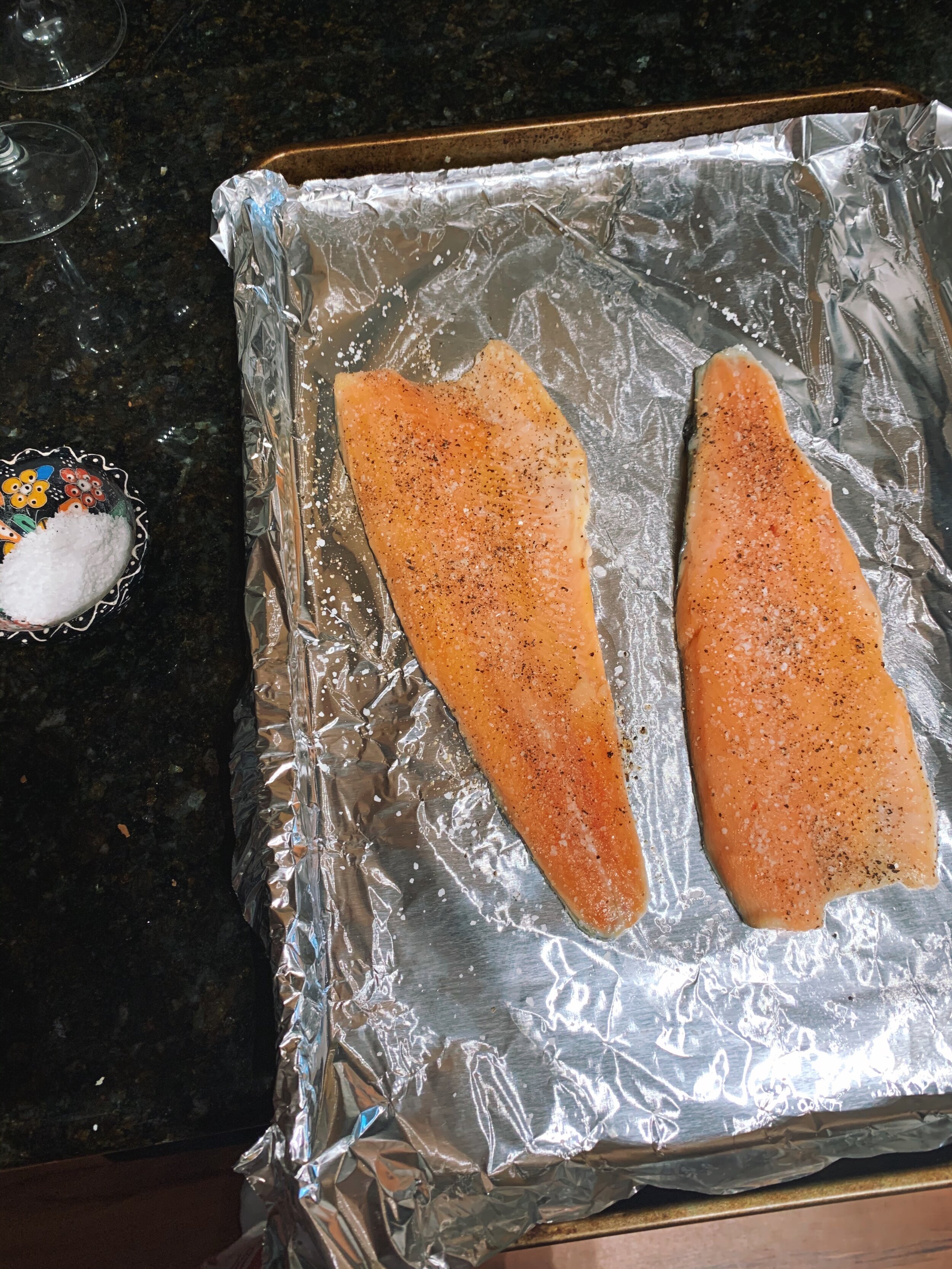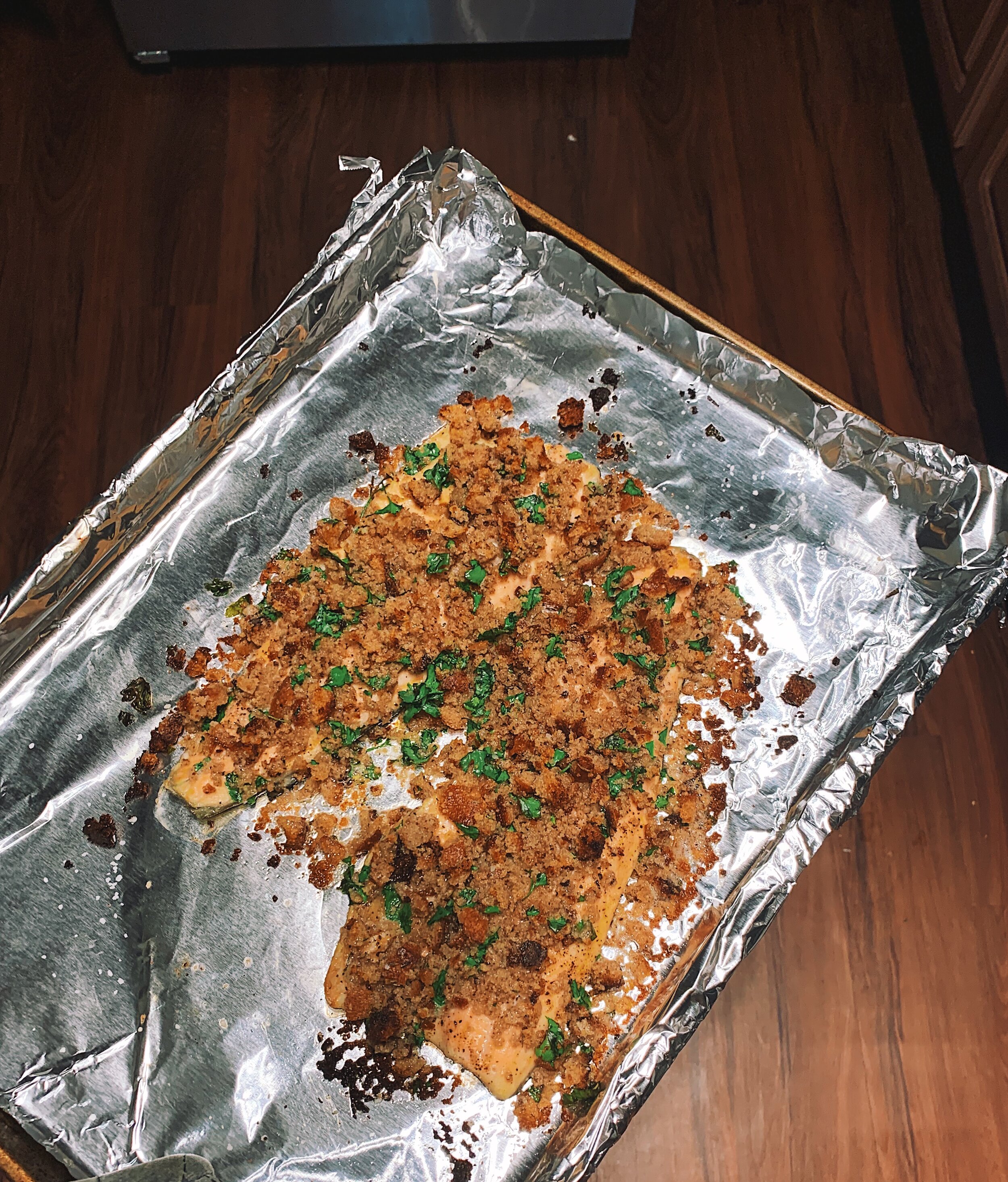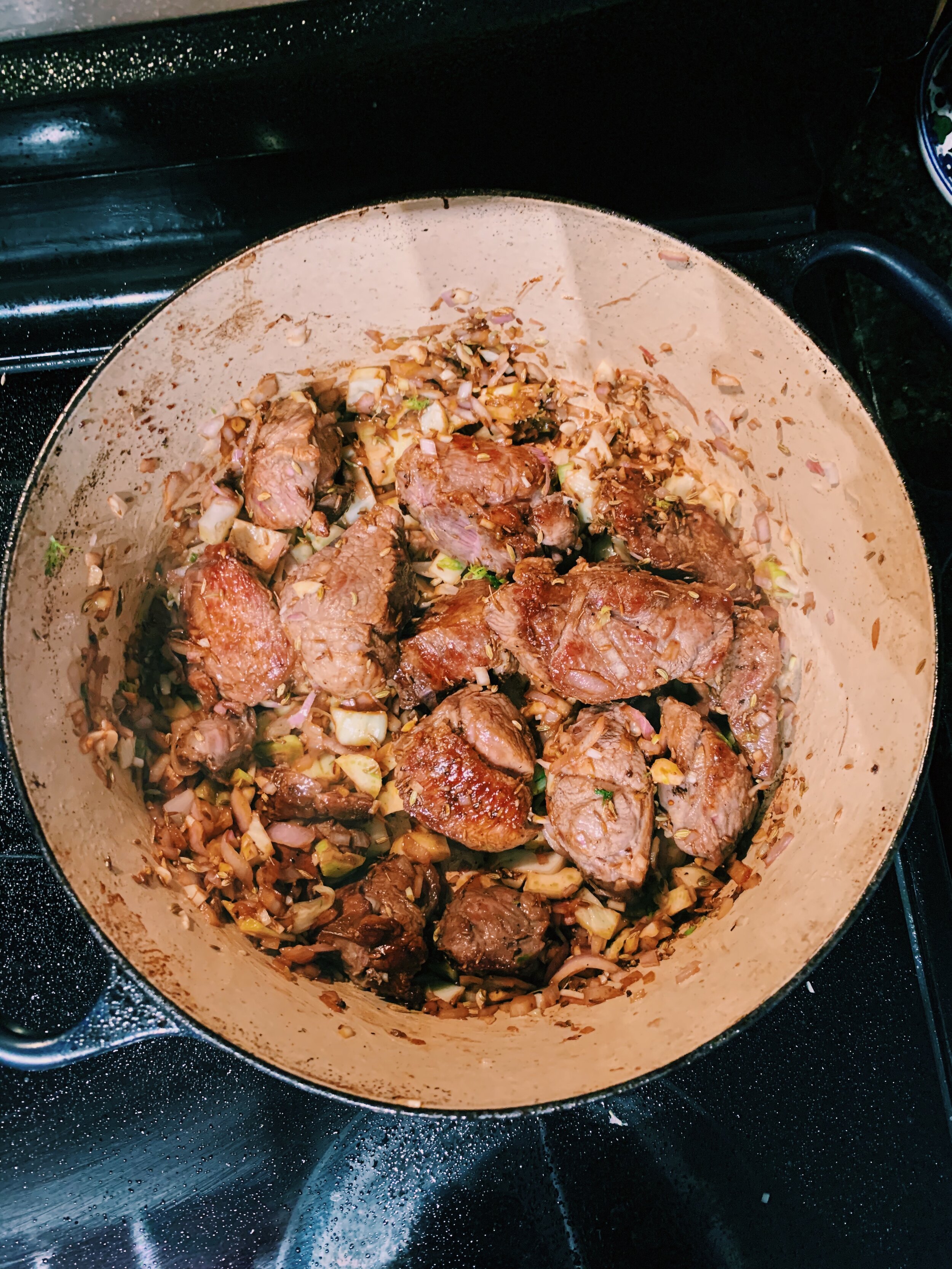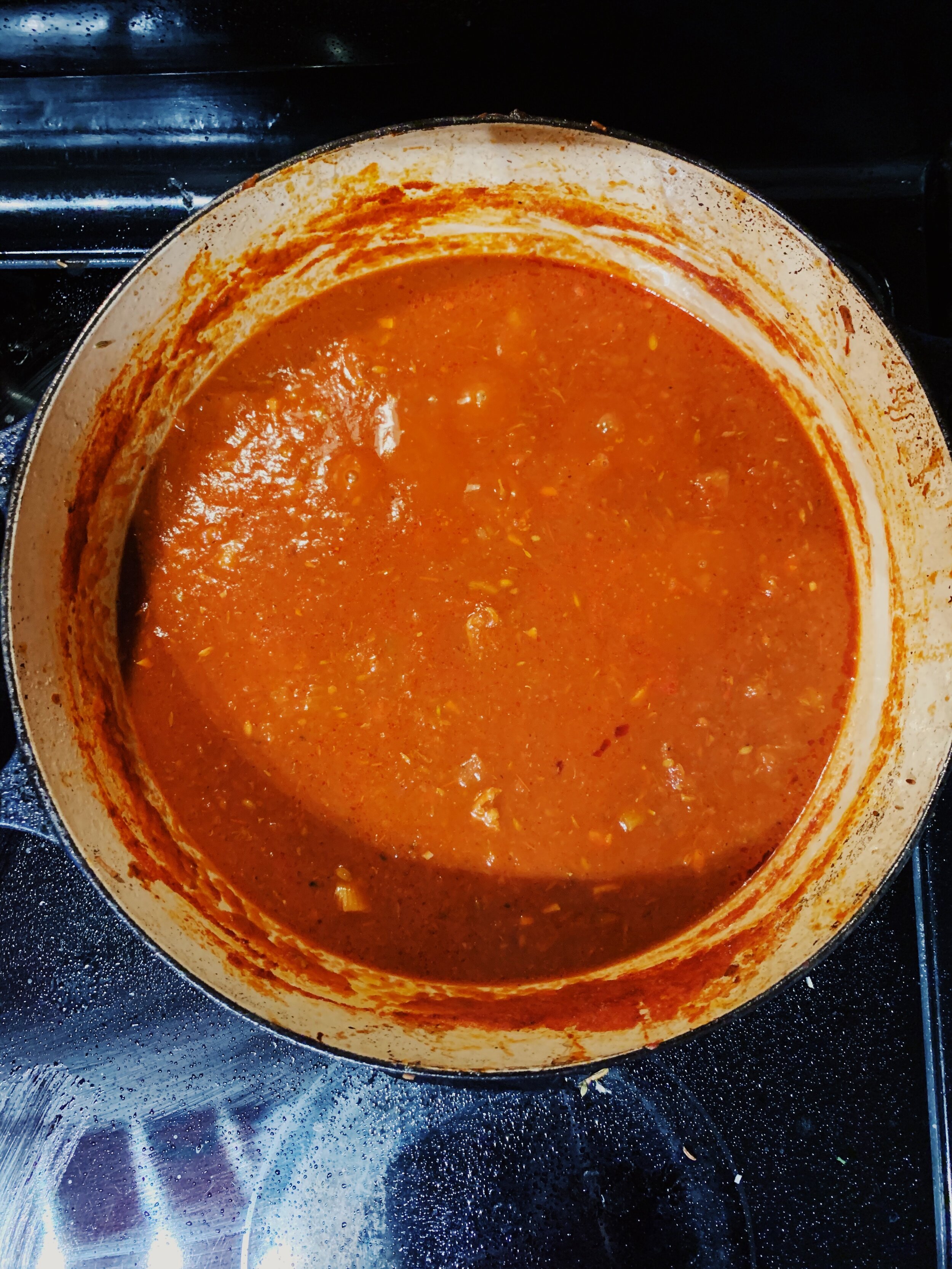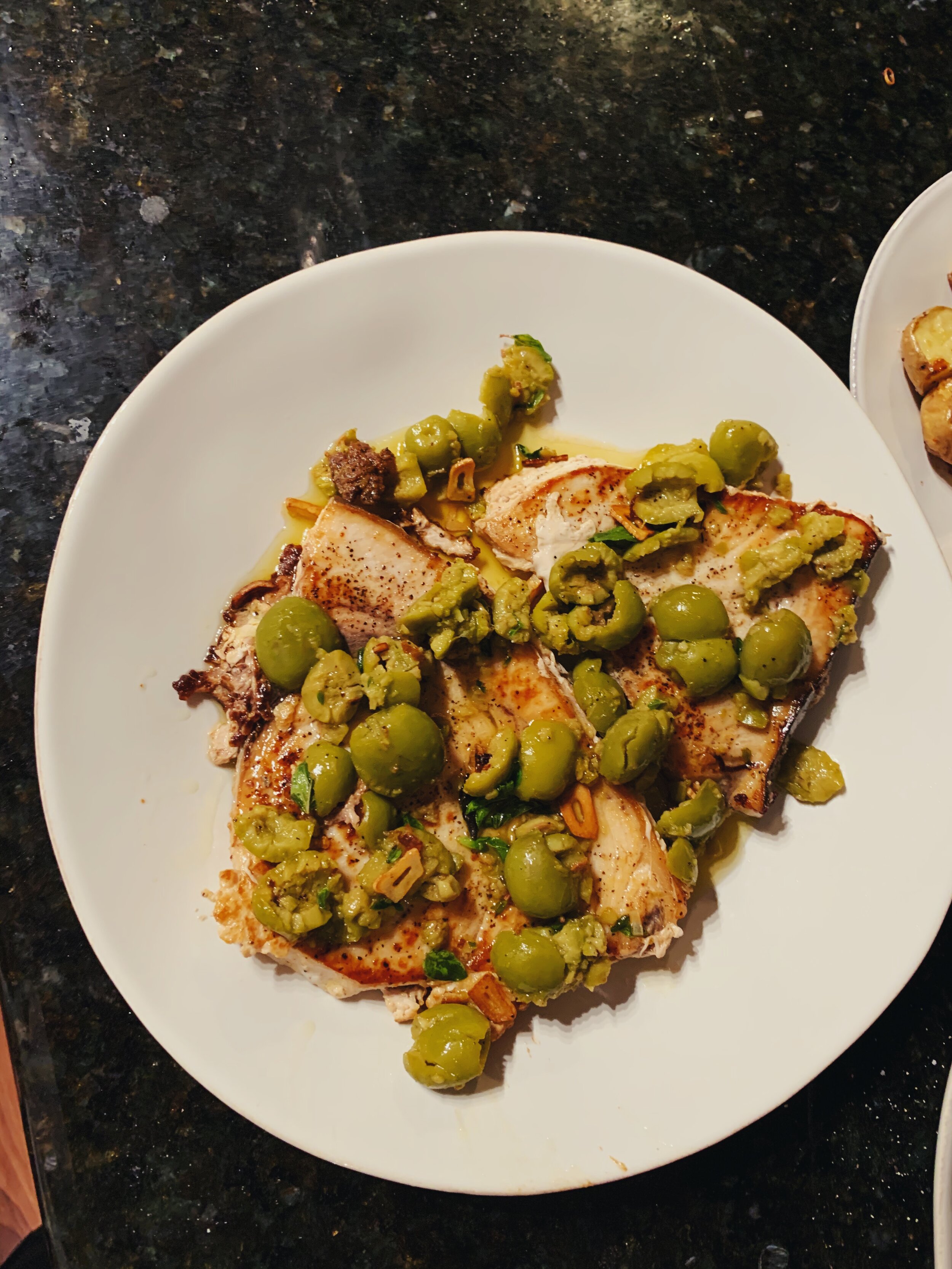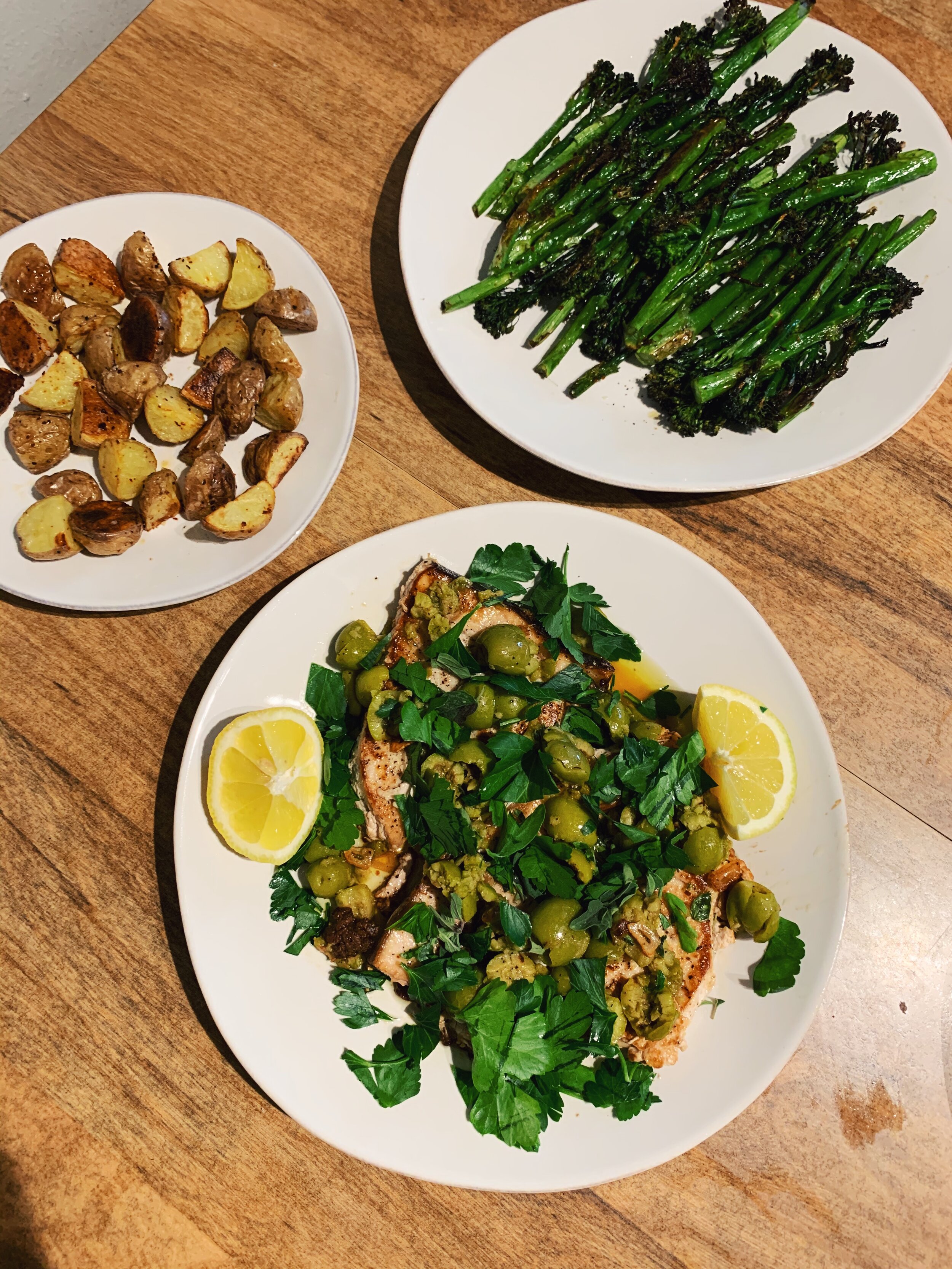Jordan and I usually splurge on an appetizer when we go out to eat for special occasions. If fried calamari is on the menu, it’s almost a guarantee that Jordan will suggest it.
Other than in its salty breaded form, I encountered squid at overnight science camp in the 6th grade. There, we snorkeled the reefs of Catalina Island, learned about oceanic tides and dissected a large squid, squealing when the ink sack let out a potent black liquid all over our gloves.
When it came to shop for squid in this dish, I could only picture the tiny tentacles and thin, curled rings in a calamari dish. You know, the rings that look like miniature pool intertubes. I spoke with the fishmonger at the Whole Foods counter, and searched the frozen section at TJ’s, but couldn’t find the small rings. It’d been a long time since I’d peered at a full squid, and I had forgotten that their bodies look like a long white tube with tentacles coming out one end. Then, it finally dawned on me that those calamari rings were actually sliced squid bodies. If I bought these large tubes, I would just need to slice them myself!
Before cooking the squid, I first split each tentacle grouping in half and thinly sliced each long body into quarter-inch pieces. I was slightly concerned that they looked flat, without that signature curled ridge. But I was quickly put at ease – as soon as the tubes touched the hot skillet, they shrank and their edges folded over the top. They resembled what I recognized as restaurant calamari.
My confidence was bolstered now, and I quite enjoyed the rest of the cooking process. Ahead of any squid business, I thinly sliced a lemon, four cloves of garlic, and a fresno chile. This allowed me to move with ease once the pan was hot and ready for the ingredients to be added in a rather quick succession. First, the squid is fried until golden brown, then removed temporarily from the pan. Next, the lemons and garlic sizzle in some olive oil, followed by the chile and the cooked squid. The cooked pasta and some pasta water get added last, with a seasoning of salt and pepper. The ingredients need time to simmer as a light sauce thickens and the noodles become well acquainted with flavor. The final step is to top the dish with a load of fresh herbs -- I used cilantro and basil, but dill and mint would also work.
The whole meal was both filling, flavorful, and not too heavy. The lemon and garlic add a good bit of acid to balance any overly fishy tones from the squid. The fresno chile packed way more heat than I expected, but in a good way. It’s spiciness is a lot brighter than that of red pepper flakes, or even jalapeno. For that reason, I would argue that Fresno chile is a must. It also added some nice pops of bright red color to the dish. For those who might be interested, I served this with Alison’s Blood Orange & Avocado Salad.
65 recipes cooked, 160 to go.




